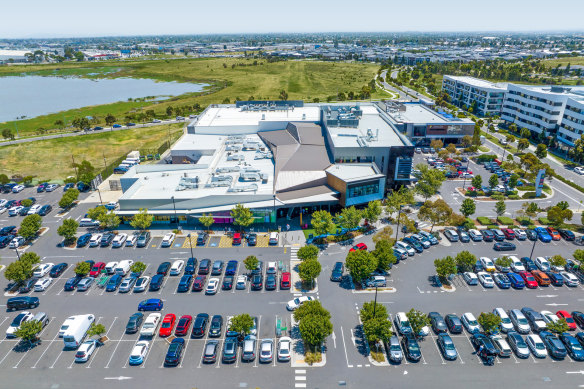
One of the biggest deals of 2023 was Vicinity’s purchase of GIC’s remaining half stake in Chatswood Chase for $307 million, giving the shopping centre a total value of $614 million – a 9 per cent discount to its $670 million book value.
In September, Hong Kong’s private equity group PAG snapped up Perth’s Midland Gate for less than $500 million and fund manager Haben purchased a half share in Stockland’s Townsville mall for $115 million – an 11.5 per cent discount to its valuation.
When private investors dominate the transaction, the prices and buyers can be harder to track down, with some parties unwilling to disclose how much of a bargain or haircut they suffered.
In Victoria, Chris Lock’s IP Generation has bought the Brand Smart shopping centre at 288 Whitehorse Road, Nunawading, for well under the $67 million Acure Asset Management paid in 2016. Lock has not yet settled so the final price remains confidential.
And in Melbourne’s growing western suburbs, an “experienced fund manager” has paid $60 million for the Williams Landing Shopping Centre.

Williams Landing Shopping Centre sold for $60 million.
Dowers said: “Most retail centres are now selling for well under their replacement cost which has been an attractor for savvy investors. The high cost of construction is affecting the supply of new centres, particularly in growth areas, so we should see existing centres perform much stronger in these regions.”
Coles and Woolworths are both major buyers and sellers of supermarkets, using their balance sheets to get new projects or upgrades under way. Woolworths recently paid $51 million for a supermarket in Niddrie in Melbourne’s north-western suburbs.
The country’s development pipeline for 2024-2025 is just 21 per cent of the 10-year average.
JLL’s head of capital markets research Andrew Quillfeldt said: “The supply-demand imbalance over the medium to long term forms part of the appeal for the retail investment case. Strong population growth and very low levels of new supply underpin the proposition.”
Melbourne has 23 projects covering 244,400 square metres of space under construction or in planning in the next five years with JLL’s report warning some projects will be shelved or deferred.
Just 41,000 square metres of new space was added to the market last year – 60 per cent less than the 10-year average.
While Sydney’s supply pipeline is bigger with about 428,700 square metres of new space either under way or in planning, last year’s additional space – just 47,900 square metres – was 45 per cent less than the 10-year annual average of 86,600 square metres.
JLL agent Sam Hatcher said: “Supply of institutional-grade assets will be the greatest challenge for investors in 2024 because the formal supply pipeline – particularly for assets over $100 million – remains ultrathin.”
The Business Briefing newsletter delivers major stories, exclusive coverage and expert opinion. Sign up to get it every weekday morning.









 Add Category
Add Category